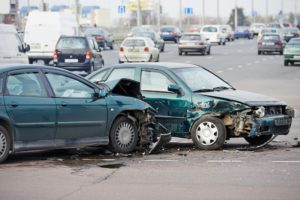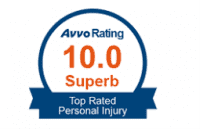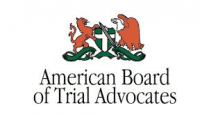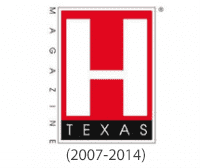Who Is at Fault in a T-Bone Accident in Texas?

T-bone accidents can be particularly devastating. This is because many of the safety features on our cars are designed to protect drivers and passengers from front and rear-end collisions, but not side-impact collisions. For older cars without side-airbags, there is little protection for the occupants from harm on impact.
In the event of a serious injury accident, you may have questions about your injuries and how you’re going to pay for your medical expenses. This is especially pressing when the accident was not your fault. It is important to understand how liability is determined following a broadside accident so you can pursue appropriate compensation. To discuss the specifics of your claim, contact Fleming Law, for help.
Either vehicle may be at fault in a T-bone collision
The driver of either vehicle may be at fault in a T-bone collision or side-impact accident. Whether a motorist slams into the side of another vehicle or is struck broadside, the driver who fails to yield to the other who has the right of way will generally be found at fault for a T-bone accident.
Following a T-bone collision, some people wrongly believe that the driver of the vehicle that collided with the side of the other vehicle is automatically at fault. The attorneys of Fleming Law, know that this is not always the case. It is possible that the other car violated your right-of-way and the other driver was at fault.
Determining who is at fault in a broadside collision requires a thorough investigation of the accident. Eyewitness accounts, pictures of the scene, and the official police report can help your legal team recreate the accident and identify the party or parties responsible for the crash.
Fault will ultimately be assigned to the driver responsible. Sometimes, both drivers in a T-bone accident are considered to be partly at fault. Texas follows a modified comparative fault rule. That means if an individual is injured in an accident, they cannot recover damages from the other party if they are deemed to be 51 percent or more at fault. If the percentage of fault is less than that, compensation is reduced by the percentage of fault.
What Is a T-Bone Accident?
T-bone accidents occur when one vehicle is hit on the side by another car. This type of accident results in the vehicles forming a “T” formation. These crashes are sometimes called a side-impact or broadside collision. They typically occur at intersections.
Depending on the location and speed of impact, T-bone accidents can result in severe injuries or may prove to be fatal.
Common Causes of T-Bone Accidents
There are many potential causes of T-bone accidents. Some of the most commonly reported causes include:
- Ignoring a stop sign or running traffic light
- Turning across traffic lanes
- Failure to look both ways when turning in an intersection
- Failure to yield
- Aggressive driving
- Distracted driving
- Driving while Impaired
- Brake failure
- Inclement weather
Proving Who Is at Fault
The law holds that all drivers have a “duty of care” to others on the road. This means a motorist must drive safely while looking out for other drivers and pedestrians. A failure to meet the duty of care is considered negligent behavior. The ability to prove the other driver’s negligence or recklessness requires solid evidence of the following:
- The at-fault driver had a “duty of care” to drive safely.
- The driver’s negligence breached this duty.
- The victim suffered damages.
- This breach was the cause of the accident and the other driver’s injuries.
It is important to note that you will have to prove that your specific injuries were caused by this accident, and that the accident was caused by the other driver’s negligent actions.
What Type of Compensation Am I Owed?
If you have been hurt in a T-bone accident, you may be forced to deal with serious and lasting injuries. You may find that the medical expenses are piling up, all while you are unable to work to support yourself and your family.
If the accident was not your fault, you should not have to pay out of your own pocket for your expenses and the repair or replacement of your damaged property. You may be eligible to pursue compensation for:
- Medical bills
- Wages for time missed at work
- Therapy and rehabilitation costs
- Repair or replacement of property
- Pain, suffering, and mental anguish
The above list is not exhaustive. There may be other expenses and damages that you are owed.
If a T-bone accident resulted in the death of a loved one, you could seek justice for them through a wrongful death claim. Your family could hold the party at fault for the fatal accident responsible for your loss of companionship, future wages and earnings, funeral expenses, and other damages.
What Should You Do If You Are in a T-Bone Accident?
If you have been injured in a side-impact collision, you do not have to suffer alone. You can take action to protect yourself and your future. The Board Certified personal injury lawyers of Fleming Law, are here to help you seek the justice you deserve.
Our Houston auto accident attorneys have over 30 years of experience helping clients in Texas who have been injured in collisions, including T-bone accidents. We know that the insurance companies are only looking out for their interests and their bottom line. We are only interested in pursuing the justice and fair compensation that you are owed by law.
Don’t wait until it is too late to file a claim. Contact us by phone or online now for a free consultation. We are ready to review your situation and advise you about your best legal options.

Brendan received his JD from South Texas College of Law and his MBA from Baylor University. He then began his legal career as in-house counsel for a publicly-traded company, advising on matters such as mergers and acquisitions, securities, compliance, and general corporate transactions. He then worked at a national law firm in which he represented commercial banks, private equity firms, and business owners in complex transactions before joining Fleming Law, Brendan uses his considerable knowledge of business-related matters by working on cases involving business law, real estate law, and contracts. Connect with me on LinkedIn








